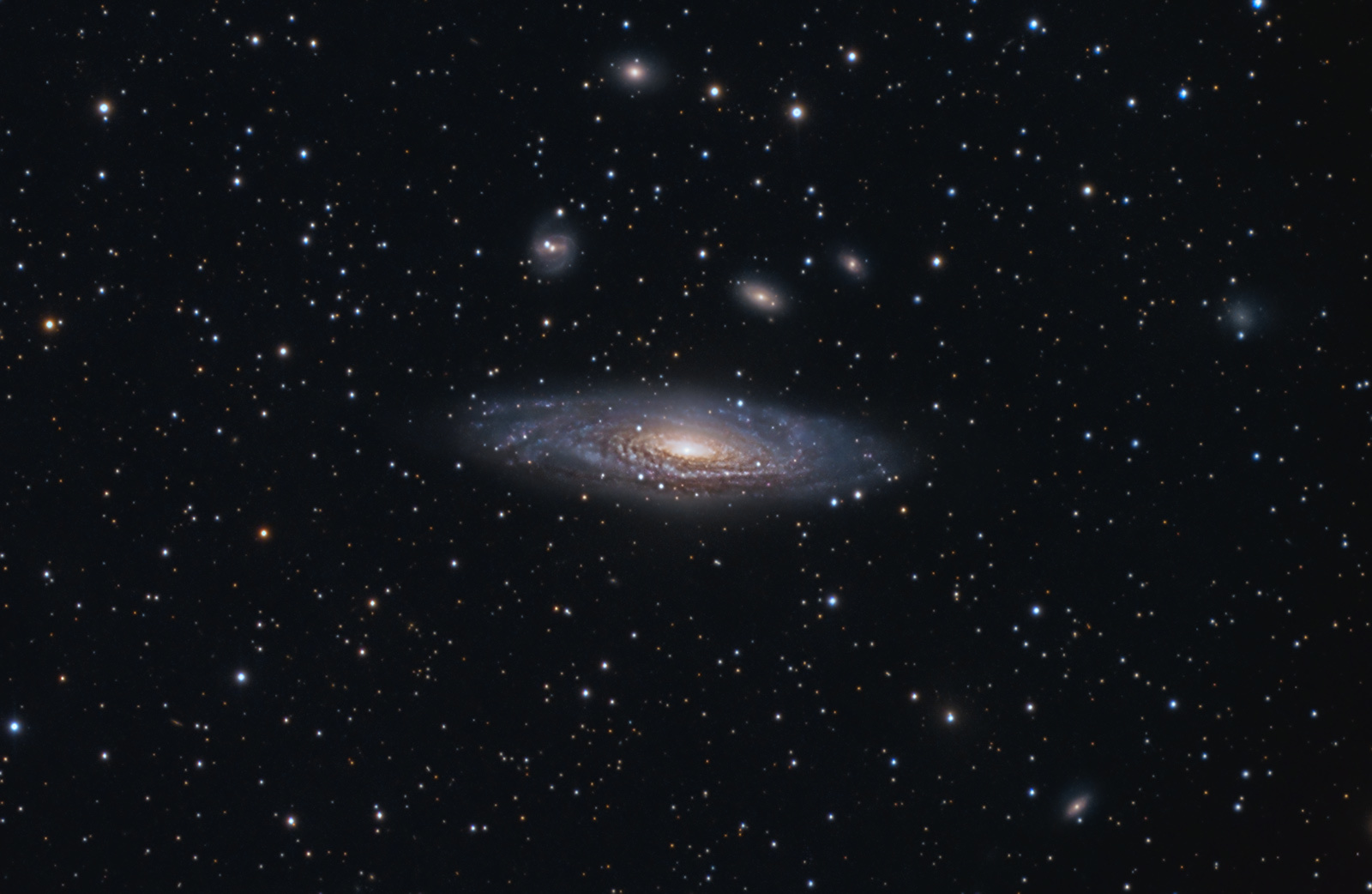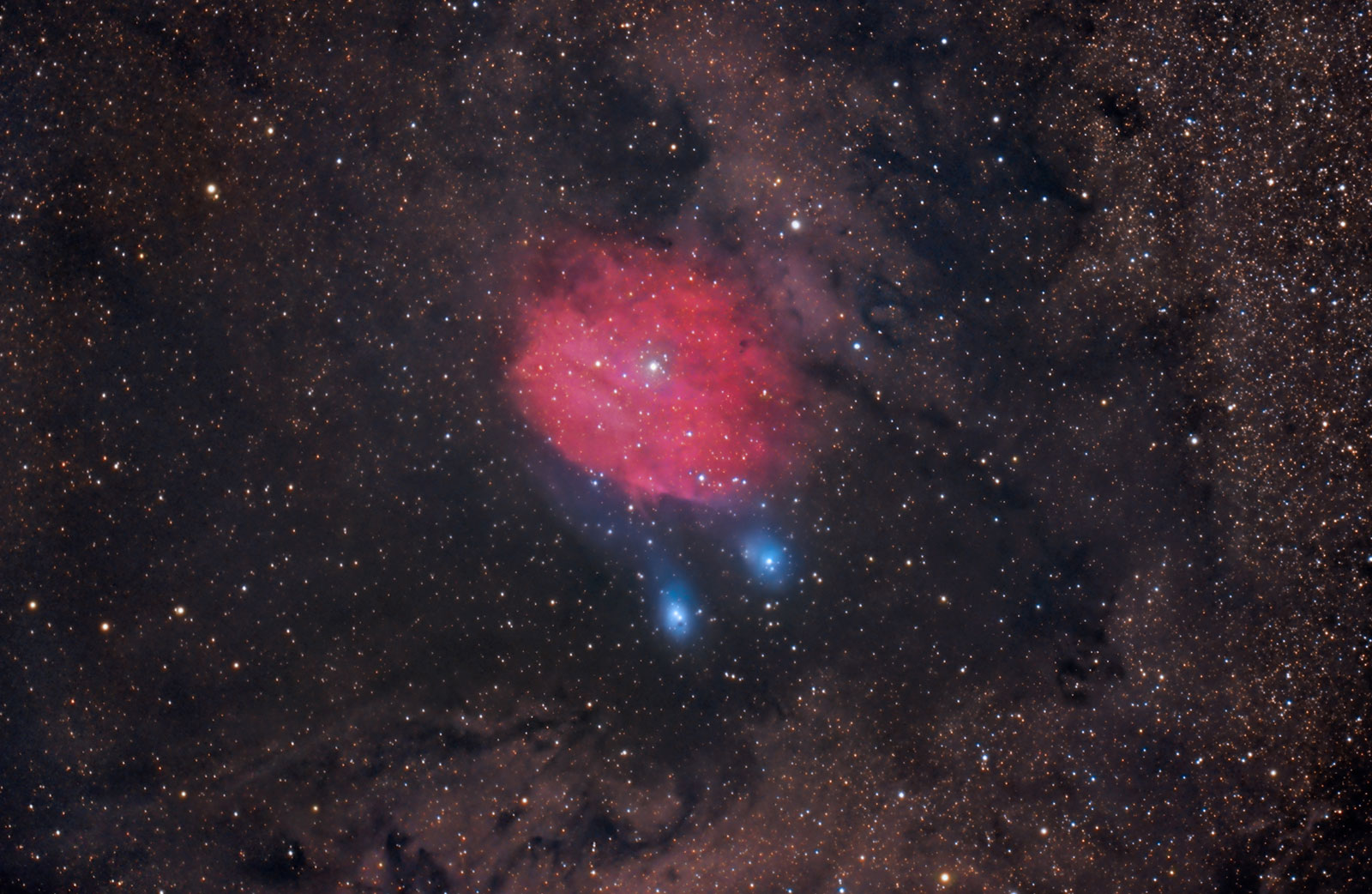Submissions: 2019 August
Submissions: 2019 August
__________________________________________________________________________________________________
Please post your images here.
Please see this thread before posting images; posting images demonstrates your agreement with
the possible uses for your image.
If hotlinking to an image, please ensure it is under 400K.
Hotlinks to images over 400K slow down the thread too much and will be disabled.
Thank you!
_________________________________________________________________________________________________
<- Previous submissions
Please post your images here.
Please see this thread before posting images; posting images demonstrates your agreement with
the possible uses for your image.
If hotlinking to an image, please ensure it is under 400K.
Hotlinks to images over 400K slow down the thread too much and will be disabled.
Thank you!
_________________________________________________________________________________________________
<- Previous submissions
Know the quiet place within your heart and touch the rainbow of possibility; be
alive to the gentle breeze of communication, and please stop being such a jerk. — Garrison Keillor
alive to the gentle breeze of communication, and please stop being such a jerk. — Garrison Keillor
Re: Submissions: 2019 August
Club formed by galaxy dust
www.astromarcin.pl
Copyright: Marcin Paciorek
Best res: http://www.astromarcin.pl/images/aaa201 ... 8_2500.jpg
www.astromarcin.pl
Copyright: Marcin Paciorek
Best res: http://www.astromarcin.pl/images/aaa201 ... 8_2500.jpg
-
thewildlifemoments
- Ensign
- Posts: 18
- Joined: Fri Jun 28, 2013 10:27 am
Re: Submissions: 2019 August
I was shooting the milky way at Capo Spartivento, south Sardinia, but there was a thunderstorm coming from africa starting with lightning strikes every 2 minutes. What a fantastic lucky night to shoot the Milky Way with lightning. I like that the shape of lightning is similar to the shape of the dark horse of the galactic center.
Sony a7rII, Samyang 14, 25" f2.8 iso 3200.
Copyright: Ivan Pedretti
Sony a7rII, Samyang 14, 25" f2.8 iso 3200.
Copyright: Ivan Pedretti
Re: Submissions: 2019 August
My most recent integration collected over two years combining L, OSC, and narrowband (HOS) data.
Low resolution inline image: Full resolution image: http://ram.org/images/space/scope/1.6+7 ... s_458m.jpg
Triangulum galaxy M33/NGC598 (c-lrgbhos).
Total integration: 458 minutes/7.64 hours (*77 x 120s for OSC + **139 x 60s + 10 x 120s for L + 13 x 300s for Ha + 8 x 300s for O3 + 8 x 300s for S2).
Cameras: *QHY247C (24mp OSC) and **QHY163M (16mp mono) CMOS cooled to -15 and -20 degrees C.
Telescopes: Takahashi *FC100DF and **FS128N Steinheil fluorite doublet apochromat refractors @ f/4.9 and f/5.7.
Reducers: Takahashi *FC-35 (0.66x) and **TOA/FS 130-R (0.7x).
Mount: Paramount MyT.
Filters: *2" Baader UV-IR-Cut and **1.25" Astrodon 5nm Ha, 3nm O3, 3nm S2.
Software: TheSkyX Pro, Sharpcap, PixInsight, Photoshop CC.
Additional details: https://www.astrobin.com/418204/
Low resolution inline image: Full resolution image: http://ram.org/images/space/scope/1.6+7 ... s_458m.jpg
Triangulum galaxy M33/NGC598 (c-lrgbhos).
Total integration: 458 minutes/7.64 hours (*77 x 120s for OSC + **139 x 60s + 10 x 120s for L + 13 x 300s for Ha + 8 x 300s for O3 + 8 x 300s for S2).
Cameras: *QHY247C (24mp OSC) and **QHY163M (16mp mono) CMOS cooled to -15 and -20 degrees C.
Telescopes: Takahashi *FC100DF and **FS128N Steinheil fluorite doublet apochromat refractors @ f/4.9 and f/5.7.
Reducers: Takahashi *FC-35 (0.66x) and **TOA/FS 130-R (0.7x).
Mount: Paramount MyT.
Filters: *2" Baader UV-IR-Cut and **1.25" Astrodon 5nm Ha, 3nm O3, 3nm S2.
Software: TheSkyX Pro, Sharpcap, PixInsight, Photoshop CC.
Additional details: https://www.astrobin.com/418204/
-
Freddyuniverse
- Ensign
- Posts: 19
- Joined: Tue Jul 24, 2018 11:15 pm
Re: Submissions: 2019 August
Milky Way AirGlow
Image of the Milky Way taken with an unmodified Canon Eos 6D MarkII, Samyang 14mm f2.8 lens (3x30 sec ISO 4000) without Guiding, from the Atacama desert in Chile on July 02, 2019. Highlights in the lower half of the image as reddish clouds, they really are a structured glow of hydroxyl emissions, a process of combining hydrogen and oxygen that occurs in the upper layers of the atmosphere. This effect is generally seen in clear and clean skies without pollution or light pollution.
https://www.freddyuniverse.com/galeria- ... ide-field/
www.freddyuniverse.com
 Via lactea AirGlow by Freddy S., en Flickr
Via lactea AirGlow by Freddy S., en Flickr
In the Gif below we can see how the hydroxyl glow moves
https://image.jimcdn.com/app/cms/image/ ... /image.gif
Copyright: © Freddyuniverse, Alfredo Sayalero
Image of the Milky Way taken with an unmodified Canon Eos 6D MarkII, Samyang 14mm f2.8 lens (3x30 sec ISO 4000) without Guiding, from the Atacama desert in Chile on July 02, 2019. Highlights in the lower half of the image as reddish clouds, they really are a structured glow of hydroxyl emissions, a process of combining hydrogen and oxygen that occurs in the upper layers of the atmosphere. This effect is generally seen in clear and clean skies without pollution or light pollution.
https://www.freddyuniverse.com/galeria- ... ide-field/
www.freddyuniverse.com
 Via lactea AirGlow by Freddy S., en Flickr
Via lactea AirGlow by Freddy S., en FlickrIn the Gif below we can see how the hydroxyl glow moves
https://image.jimcdn.com/app/cms/image/ ... /image.gif
Copyright: © Freddyuniverse, Alfredo Sayalero
Last edited by bystander on Sat Aug 03, 2019 3:57 am, edited 1 time in total.
Reason: please no hot links to images > 500kb
Reason: please no hot links to images > 500kb
Re: Submissions: 2019 August
A night at the HESS Telescope
https://www.bastienfoucher.com
Copyright: Bastien Foucher
A night at the HESS telescope in Namibia... Jupiter and the Milky way are reflecting onto the HESS II telescope mirror (28 meters diameter).
A high resolution version is available here : https://photos.smugmug.com/Astrophotogr ... _Arche.jpg
Bastien
https://www.bastienfoucher.com
Copyright: Bastien Foucher
A night at the HESS telescope in Namibia... Jupiter and the Milky way are reflecting onto the HESS II telescope mirror (28 meters diameter).
A high resolution version is available here : https://photos.smugmug.com/Astrophotogr ... _Arche.jpg
Bastien
Re: Submissions: 2019 August
Milky Way and bio-luminescent phytoplankton at Acadia National Park
http://jasongambone.com/
https://www.facebook.com/jason.gambone
Jason Gambone
This was a night I won't soon forget. On one of the many clear summer nights in Acadia National Park in Maine, I wanted to go back out to the Schoodic Peninsula for a night shot. I arrived just at the right time and set up on a cliff to get the treeline jutting out into the ocean.
I saw some reflections in the water and I first thought it was the stars reflecting. They weren't stars, it was bio-luminescent phytoplankton! With every crash of a wave, a blueish glow was emitted. The bright blue light is the result of a natural chemical reaction which occurs when plankton is disturbed with oxygen. I stood and watched long into the night. Yet another thing of beauty I would never have witnessed if it wasn't for my passion of outdoor photography.
Sony A7iii
Sigma 14mm F/1.8 Art
Foreground: f/1.8 @30 seconds ISO 8000⠀
Sky: f/2.0 @20 seconds ISO 8000
http://jasongambone.com/
https://www.facebook.com/jason.gambone
Jason Gambone
This was a night I won't soon forget. On one of the many clear summer nights in Acadia National Park in Maine, I wanted to go back out to the Schoodic Peninsula for a night shot. I arrived just at the right time and set up on a cliff to get the treeline jutting out into the ocean.
I saw some reflections in the water and I first thought it was the stars reflecting. They weren't stars, it was bio-luminescent phytoplankton! With every crash of a wave, a blueish glow was emitted. The bright blue light is the result of a natural chemical reaction which occurs when plankton is disturbed with oxygen. I stood and watched long into the night. Yet another thing of beauty I would never have witnessed if it wasn't for my passion of outdoor photography.
Sony A7iii
Sigma 14mm F/1.8 Art
Foreground: f/1.8 @30 seconds ISO 8000⠀
Sky: f/2.0 @20 seconds ISO 8000
Re: Submissions: 2019 August
IC 5070 Pelican Nebula in Cygnus
http://www.joerenzetti.com/
Copyright: Joe Renzetti The Pelican in narrowband and processed in a SHO palette. I opted to do a narrow field version focusing on the area with the Herbig–Haro objects from the active star formation. The NB makes them really pop out.
C14 & Hyperstar, ASI1600MM-c & Baadder 2” HA, OII, SII, 30 subs each filter @ 90 seconds
http://www.joerenzetti.com/
Copyright: Joe Renzetti The Pelican in narrowband and processed in a SHO palette. I opted to do a narrow field version focusing on the area with the Herbig–Haro objects from the active star formation. The NB makes them really pop out.
C14 & Hyperstar, ASI1600MM-c & Baadder 2” HA, OII, SII, 30 subs each filter @ 90 seconds
-
KuriousGeorge
- Science Officer
- Posts: 218
- Joined: Wed Dec 30, 2015 7:07 am
- Location: San Diego, CA
- Contact:
-
jpmiss
Re: Submissions: 2019 August
Orion (and its reflection) rising between Zodiacal light and the Magellanic Clouds 1:30 before sunrise.
Panorama made from 6 images in vertical orientation.
July the 3rd 2019
Cuesta del Viento - Rodeo - Argentina
Jean-Paul Mission

Southern Sky [EXPLORED] by jean-paul mission, sur Flickr
Panorama made from 6 images in vertical orientation.
July the 3rd 2019
Cuesta del Viento - Rodeo - Argentina
Jean-Paul Mission

Southern Sky [EXPLORED] by jean-paul mission, sur Flickr
-
Freddyuniverse
- Ensign
- Posts: 19
- Joined: Tue Jul 24, 2018 11:15 pm
Re: Submissions: 2019 August
Sunset and Dawn of the Zodiac Light
Composition of two photographs of the Zodiacal light, taken in Chile, The Top part at sunset on July 2 at 18:23 from North of La Totorita and on July 1, 2019 at 05:10 in the morning just before of the Sunrise from Andacollo.
We can also observe Air glow produced by hydroxyl strata in the form of red clouds in the photo of the zodiac light at sunset
https://www.freddyuniverse.com/galeria- ... ide-field/
www.freddyuniverse.com
Copyright: © Freddyuniverse, Alfredo Sayalero
 Luz Zodiacal Oeste-Este by Freddy S., en Flickr
Luz Zodiacal Oeste-Este by Freddy S., en Flickr
Composition of two photographs of the Zodiacal light, taken in Chile, The Top part at sunset on July 2 at 18:23 from North of La Totorita and on July 1, 2019 at 05:10 in the morning just before of the Sunrise from Andacollo.
We can also observe Air glow produced by hydroxyl strata in the form of red clouds in the photo of the zodiac light at sunset
https://www.freddyuniverse.com/galeria- ... ide-field/
www.freddyuniverse.com
Copyright: © Freddyuniverse, Alfredo Sayalero
 Luz Zodiacal Oeste-Este by Freddy S., en Flickr
Luz Zodiacal Oeste-Este by Freddy S., en FlickrRe: Submissions: 2019 August
NGC 7331 Deer Lick galaxy in Pegasus
http://www.joerenzetti.com/
Copyright: Joe Renzetti The spiral galaxy in Pegasus with the surrounding satellite galaxies
Celestron C14 ASI178MM-c & 120 subs Lum & 30 each RGB
http://www.joerenzetti.com/
Copyright: Joe Renzetti The spiral galaxy in Pegasus with the surrounding satellite galaxies
Celestron C14 ASI178MM-c & 120 subs Lum & 30 each RGB
-
KuriousGeorge
- Science Officer
- Posts: 218
- Joined: Wed Dec 30, 2015 7:07 am
- Location: San Diego, CA
- Contact:
Re: Submissions: 2019 August
Firework Galaxy without intervening dust. KG Observatory.
http://www.astrobin.com/419296/
Here's a few excerpts from the Q&A discussion on the PI forum with Adam Block...
Q1: Typically when I use PCC I notice a bit of a shift towards red on galaxies. I first noticed this with IC342. But now when I reprocessed the Fireworks galaxy from CC to PCC I see a huge difference in CC (left) vs PCC (right). For CC I use most of the galaxy core shy of the dimmer arms for a white reference. For PCC, I tried Average Spiral Galaxy and Sc Galaxy. Both yield the same results. Is this PCC really what it should look like?
A1: The question you are asking deals with what to do with reddened objects. Both IC 342 and NGC 6946 are *severely* reddened by intervening dust. So they will appear quite red when you produce an image that does not compensate for this effect. PCC will not compensate since you are using color indices from a star catalog- the color channel weights you derive are independent of the galactic extinction. When you use CC, you are correcting for the galactic extinction (or at least making it less red) by shifting the white point as measured by the color channel signal strengths in your image. Said another way... if you had used CC on an *un-extincted* spiral galaxy (say from another image)- your PCC and CC results would agree much more closely (being red).
Do you think I am on track with my answer?
Q2: So are you saying that in this instance CC would be more correct?
A2: Some people would argue seeing a blue extincted (reddened) object is correct since this *is* what it looks like from our vantage point. We are getting fewer blue photons from the object than we otherwise would... so it should look redder. Other people would say... HEY! We are getting fewer blue photons...that isn't fair, we need to raise the blue signal (remove the "excess red") to compensate... this is how the galaxy would appear outside of our Milky Way (or away from the plane). I tend to find myself in the first camp since it is difficult to know exactly how much an object is being reddened. However, for artistic reasons, some objects are so red that there is a complete loss of color contrast- and so adjusting the white point does certainly bring them to life.
http://www.astrobin.com/419296/
Here's a few excerpts from the Q&A discussion on the PI forum with Adam Block...
Q1: Typically when I use PCC I notice a bit of a shift towards red on galaxies. I first noticed this with IC342. But now when I reprocessed the Fireworks galaxy from CC to PCC I see a huge difference in CC (left) vs PCC (right). For CC I use most of the galaxy core shy of the dimmer arms for a white reference. For PCC, I tried Average Spiral Galaxy and Sc Galaxy. Both yield the same results. Is this PCC really what it should look like?
A1: The question you are asking deals with what to do with reddened objects. Both IC 342 and NGC 6946 are *severely* reddened by intervening dust. So they will appear quite red when you produce an image that does not compensate for this effect. PCC will not compensate since you are using color indices from a star catalog- the color channel weights you derive are independent of the galactic extinction. When you use CC, you are correcting for the galactic extinction (or at least making it less red) by shifting the white point as measured by the color channel signal strengths in your image. Said another way... if you had used CC on an *un-extincted* spiral galaxy (say from another image)- your PCC and CC results would agree much more closely (being red).
Do you think I am on track with my answer?
Q2: So are you saying that in this instance CC would be more correct?
A2: Some people would argue seeing a blue extincted (reddened) object is correct since this *is* what it looks like from our vantage point. We are getting fewer blue photons from the object than we otherwise would... so it should look redder. Other people would say... HEY! We are getting fewer blue photons...that isn't fair, we need to raise the blue signal (remove the "excess red") to compensate... this is how the galaxy would appear outside of our Milky Way (or away from the plane). I tend to find myself in the first camp since it is difficult to know exactly how much an object is being reddened. However, for artistic reasons, some objects are so red that there is a complete loss of color contrast- and so adjusting the white point does certainly bring them to life.
-
KuriousGeorge
- Science Officer
- Posts: 218
- Joined: Wed Dec 30, 2015 7:07 am
- Location: San Diego, CA
- Contact:
Re: Submissions: 2019 August
Fireworks Galaxy. No Dust vs Dust regarding color. KG Observatory. Please see prior submissions for full images.
-
G.Chatzifrantzis
- Ensign
- Posts: 29
- Joined: Wed Nov 01, 2017 12:46 pm
Re: Submissions: 2019 August
Vdb 141 - Ghost Nebula
Equipment :
OTA : Celestron C11 XLT - Starizona Hyperstar f2 - 560mm FL
Mount : EQ6
Camera : Atik 460exc
Guiding : ViewFinder 50mm - Lodestar X2
Filters : Astronomik CLS
SoftWare :
DSS - Pix - Cs
Exposure:
RGB : 4 hours
Location : Grevena Greece
Equipment :
OTA : Celestron C11 XLT - Starizona Hyperstar f2 - 560mm FL
Mount : EQ6
Camera : Atik 460exc
Guiding : ViewFinder 50mm - Lodestar X2
Filters : Astronomik CLS
SoftWare :
DSS - Pix - Cs
Exposure:
RGB : 4 hours
Location : Grevena Greece
-
KuriousGeorge
- Science Officer
- Posts: 218
- Joined: Wed Dec 30, 2015 7:07 am
- Location: San Diego, CA
- Contact:
Re: Submissions: 2019 August
The Hidden Galaxy (Uncovered). KG Observatory, Julian, CA.
This is a re-process of my prior IC 342 image from last November. Here I use PI CC rather than PCC to help "uncover" the red hue introduced by the Milky Way dust between us and this distant galaxy. Same technique used for Fireworks Galaxy above.
http://www.astrobin.com/419334/
This is a re-process of my prior IC 342 image from last November. Here I use PI CC rather than PCC to help "uncover" the red hue introduced by the Milky Way dust between us and this distant galaxy. Same technique used for Fireworks Galaxy above.
http://www.astrobin.com/419334/
Re: Submissions: 2019 August
Lobster (NGC6357), Cat's Paw (NGC6334), B257-258, RCW126, Sh2-10
http://astrofotky.cz/~Konihlav
Copyright: Pavel Pech
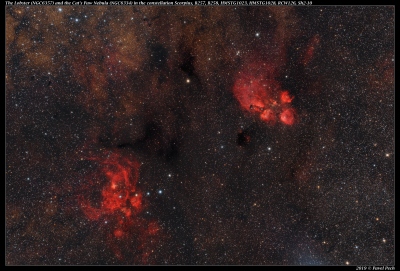

http://astrofotky.cz/~Konihlav
Copyright: Pavel Pech

Re: Submissions: 2019 August
IC 1283 emission nebula in Sagittarius
http://www.joerenzetti.com/
Copyright: Joe Renzetti IC 1283 emission nebula in Sagittarius. The two reflection nebulae spots are NGC 6589 and NGC 6590
Celestron C14 & Hyperstar, Astro-Physics 1100GTO, ASI 1600MM-c, Baader 2" LRGB & HA
http://www.joerenzetti.com/
Copyright: Joe Renzetti IC 1283 emission nebula in Sagittarius. The two reflection nebulae spots are NGC 6589 and NGC 6590
Celestron C14 & Hyperstar, Astro-Physics 1100GTO, ASI 1600MM-c, Baader 2" LRGB & HA
-
barretosmed
- Science Officer
- Posts: 452
- Joined: Thu Oct 12, 2017 6:04 pm
Re: Submissions: 2019 August
The Cat's Paw Nebula
Image made entirely in Sao Paulo-SP-Brazil (population 12.18 million) 4km from Paulista Avenue (main city avenue).
Best details (facebook takes details):
[https://www.astrobin.com/full/419551/B/?nc=user[(https://www.astrobin.com/full/419551/B/?nc=user)
Equipment:
Apo 80mm
Asi 1600mm coled
ASIAIR
HOO - Made:
* 60 H-alpha frames in 150 "
* 65 frames in OIII in 150 "
* 50 frames in S2 out of 100 "(no S2 frame availed)
Sao Paulo-SP-Brazil
Done in April, May, and June 2019
Copyright: Your name
Image made entirely in Sao Paulo-SP-Brazil (population 12.18 million) 4km from Paulista Avenue (main city avenue).
Best details (facebook takes details):
[https://www.astrobin.com/full/419551/B/?nc=user[(https://www.astrobin.com/full/419551/B/?nc=user)
Equipment:
Apo 80mm
Asi 1600mm coled
ASIAIR
HOO - Made:
* 60 H-alpha frames in 150 "
* 65 frames in OIII in 150 "
* 50 frames in S2 out of 100 "(no S2 frame availed)
Sao Paulo-SP-Brazil
Done in April, May, and June 2019
Copyright: Your name
-
Wu Zhuoqun
- Ensign
- Posts: 13
- Joined: Thu Aug 08, 2019 1:47 am
Re: Submissions: 2019 August
Part of M 83-Hubble Legacy Archives
This image processed based on WFC3/UVIS F814W/F657N/F438W/F336W, shows the star forming regions, hot young stars and dust lanes.
Full resolution:
https://www.astrobin.com/full/419710/0/?nc=user
Data processed by: Wu Zhuoqun

This image processed based on WFC3/UVIS F814W/F657N/F438W/F336W, shows the star forming regions, hot young stars and dust lanes.
Full resolution:
https://www.astrobin.com/full/419710/0/?nc=user
Data processed by: Wu Zhuoqun


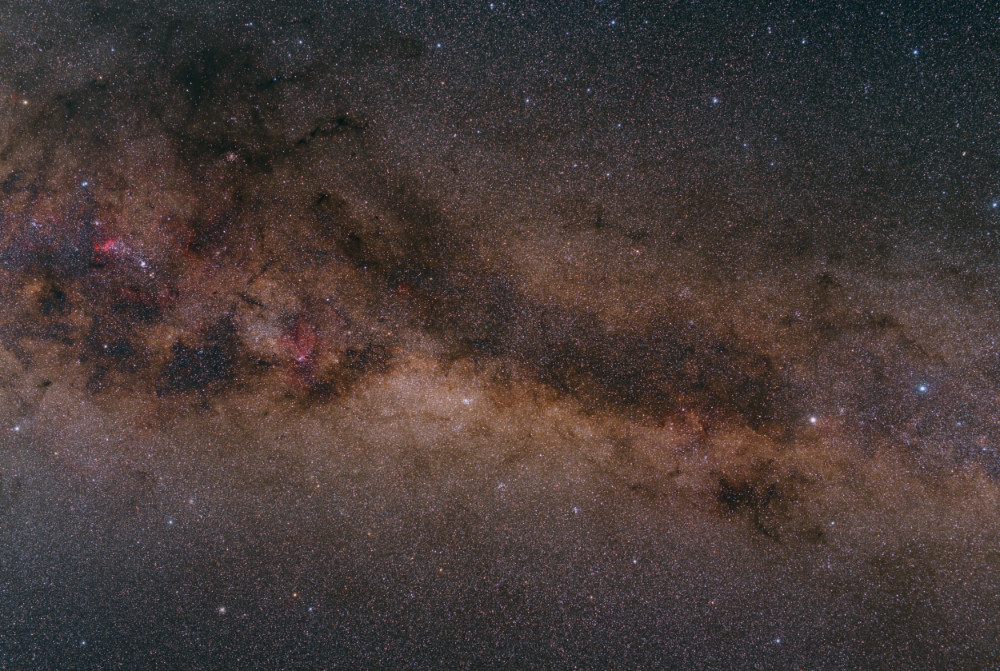

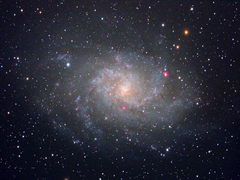

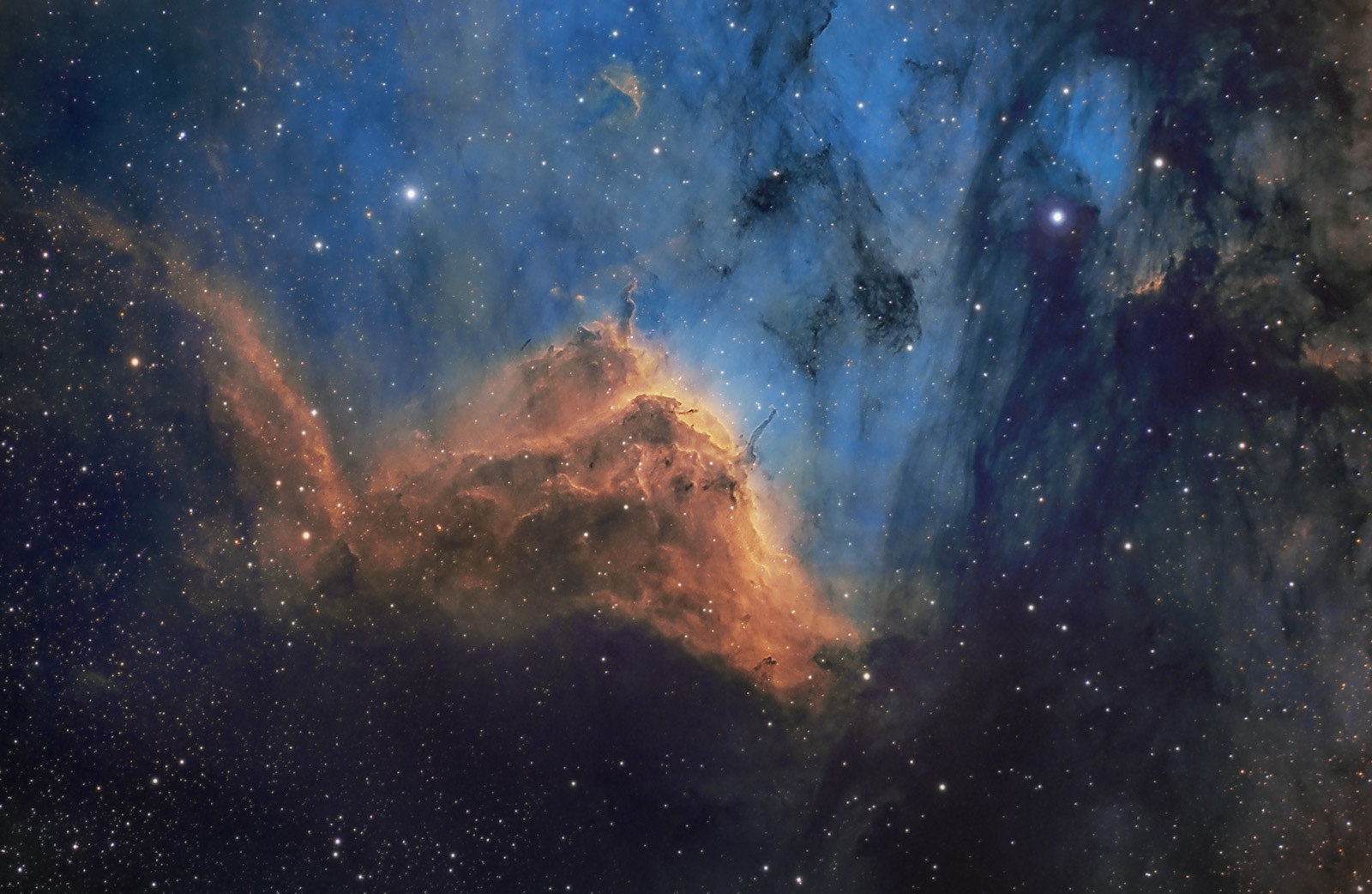
 [/url
[/url